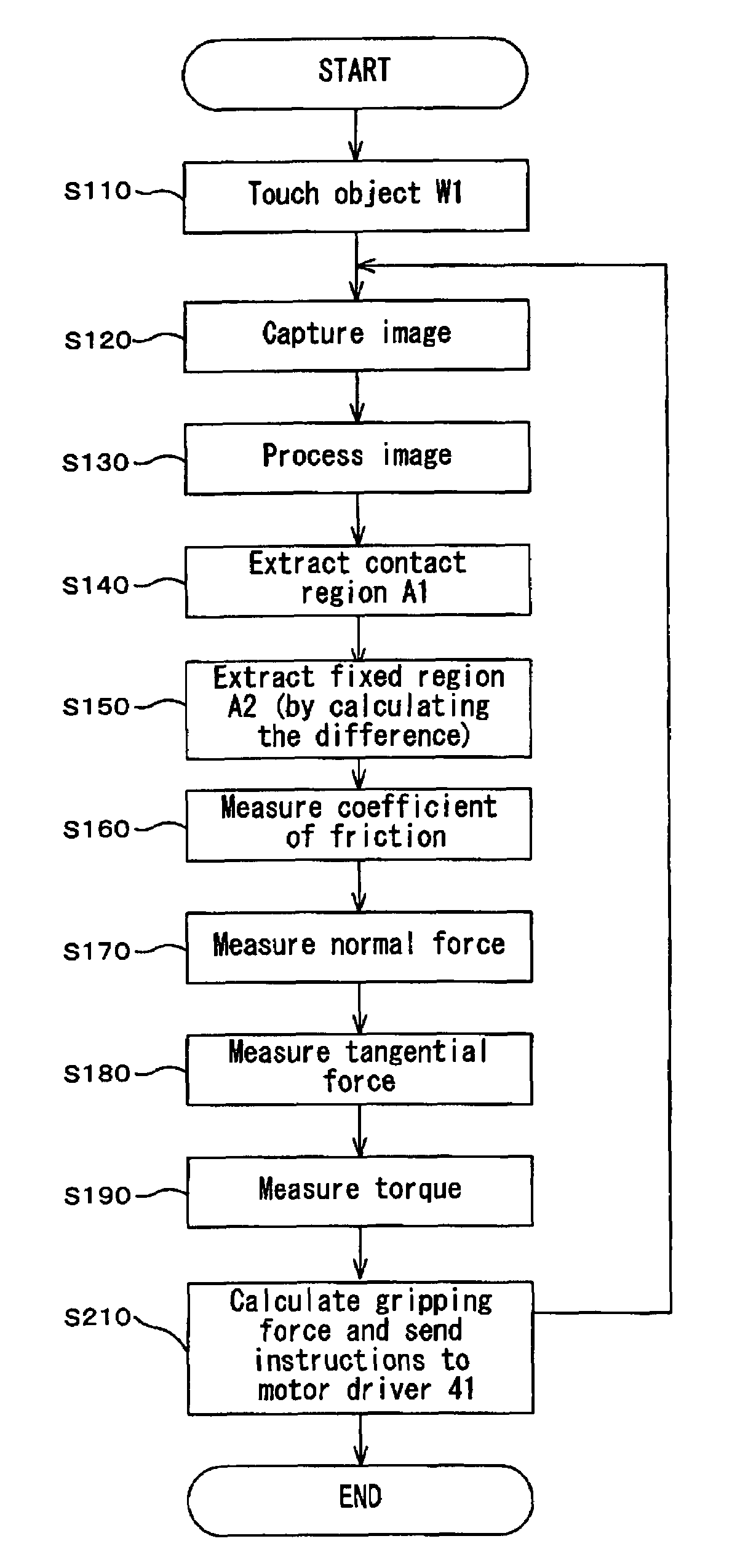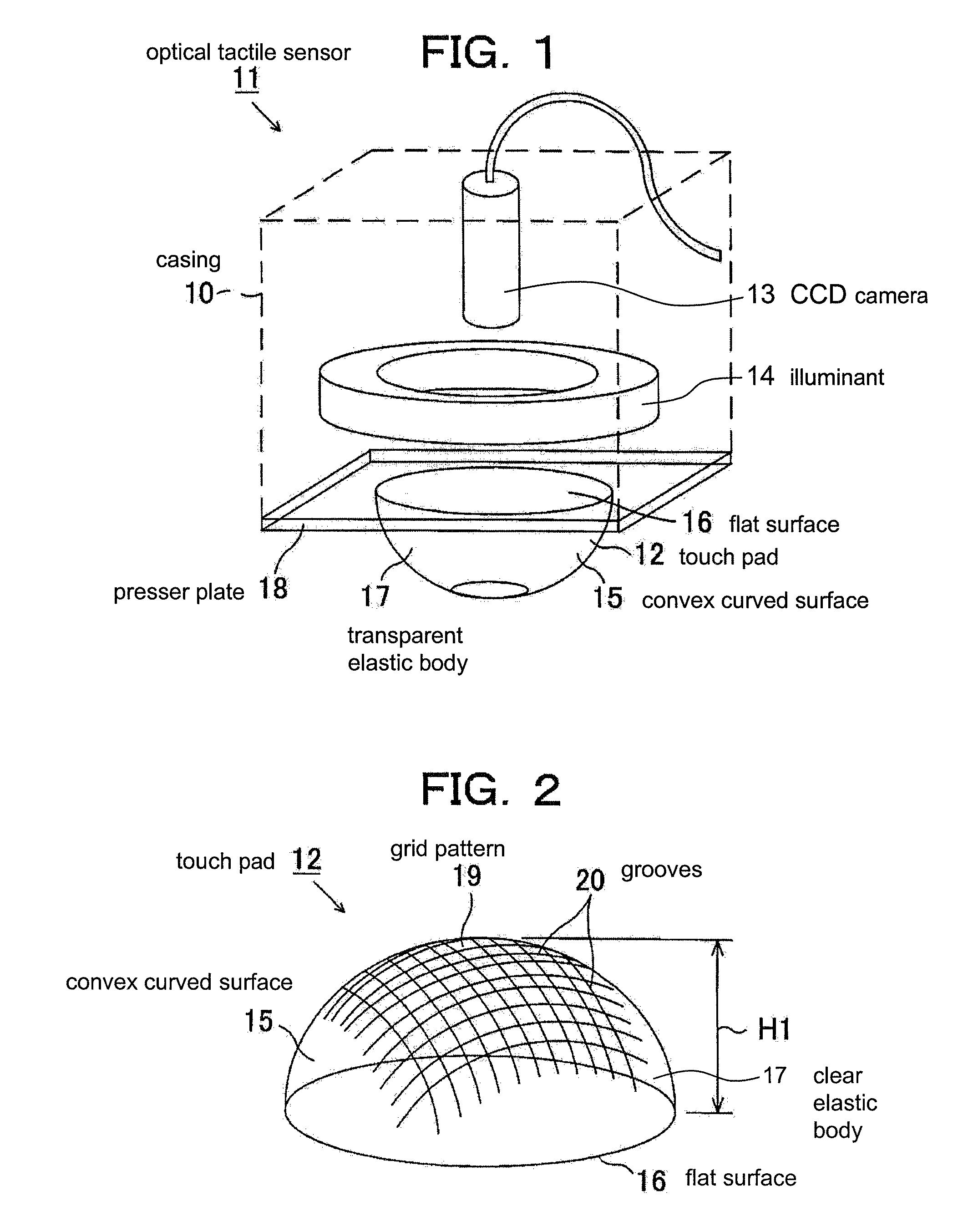Control of object operating force, object gripping force and robot hands
a technology control of object gripping force, which is applied in the direction of programme control, force/torque/work measurement apparatus, instruments, etc., can solve the problems of insufficient durability, difficult wiring, and complicated sensor manufacturing, so as to facilitate the recognition of its deformation, facilitate the determination of the force acting on the tactile portion, and facilitate the effect of manufacturing
- Summary
- Abstract
- Description
- Claims
- Application Information
AI Technical Summary
Benefits of technology
Problems solved by technology
Method used
Image
Examples
first embodiment
[0048]A multi-dimensional sensing system that embodies the present invention (the first embodiment) will be described in detail hereafter based on FIGS. 1 to 8.
[0049]As shown in FIGS. 1 and 2, a cylindrical casing 10 encasing an optical tactile sensor 11 includes a tactile portion, such as touch pad 12 mounted on a distal end thereof. Disposed within the casing 10 is an imaging means, such as a CCD camera 13. The CCD camera 13 is disposed on the side of the touch pad 12 opposite to the side that makes contact with an object, W1 (see FIG. 3). The CCD camera 13 images the behavior (such as the displacement and deformation) of the grid pattern 19 on the touch pad 12 from behind while the object W1 is in touch with the touch pad 12. Accordingly, the CCD camera 13 is focused on the convex curved surface 15 of the touch pad 12, which bears the grid pattern 19.
[0050]Additionally disposed within the casing 10 is a circular illuminant 14 for illuminating the grid pattern 19. According to thi...
second embodiment
[0092]The second embodiment employs the first, second, and third servomotor 36 to 38 as the actuators to drive the fingers 34 and 35. Alternatively, other types of actuators, such as hydraulic cylinders, pneumatic cylinders, and ultrasonic motors, may be used instead.
[0093]An optical tactile sensor and a sensing system incorporating the optical tactile sensor according to the present invention may facilitate two-way communication of tactile information between humans and robots. For example, the present invention may be applicable to robot teaching machines which, in exemplary embodiments, teach robots subtle movements and sensitivity required of fingertips in, for example, throwing a ball.
PUM
| Property | Measurement | Unit |
|---|---|---|
| depth | aaaaa | aaaaa |
| depth | aaaaa | aaaaa |
| height | aaaaa | aaaaa |
Abstract
Description
Claims
Application Information
 Login to View More
Login to View More - R&D
- Intellectual Property
- Life Sciences
- Materials
- Tech Scout
- Unparalleled Data Quality
- Higher Quality Content
- 60% Fewer Hallucinations
Browse by: Latest US Patents, China's latest patents, Technical Efficacy Thesaurus, Application Domain, Technology Topic, Popular Technical Reports.
© 2025 PatSnap. All rights reserved.Legal|Privacy policy|Modern Slavery Act Transparency Statement|Sitemap|About US| Contact US: help@patsnap.com



